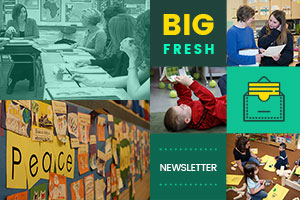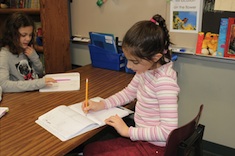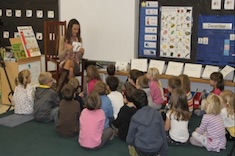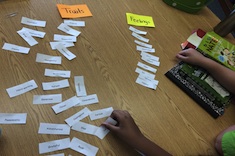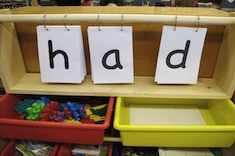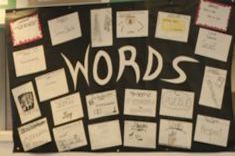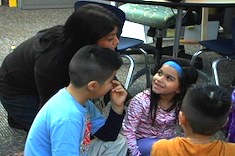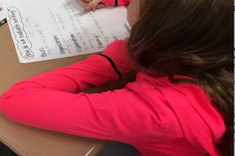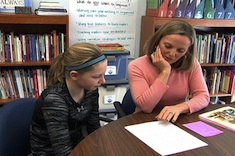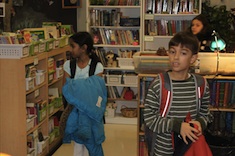Library
Choice Literacy Articles & Videos
The Choice Literacy library contains over 3,000 articles and 900 videos from 150+ contributors. Classic Classroom and Literacy Leadership subscribers have access to the entire library. Content is updated continuously, with five to six new features published each week.
Latest Content
The Beauty of Imitation
Jennifer Schwanke explains how concerns about plagiarism can get in the way of recognizing the value of mimicking the styles of other writers to find our own.
Temporary Strategies
Clare Landrigan confers with a student and discovers that a tool designed to help the reader is actually hindering her learning. The experience causes her to reflect on the need for flexibility when matching strategy scaffolds to young readers.
The Big Fresh April 2, 2016 Editing with a Writer’s Eyes
Editing is the focus of this week’s Big Fresh.
Supporting Talk Around Writer’s Craft
Tara Barnett and Kate Mills help young writers move away from seeing editing as “adding more details,” and toward developing more specific language for the revision process.
May’s Menu
Maria Caplin gives her students a range of options for closing out a year of literacy learning in style.
Modeling Nonfiction Writing for English Language Learners: Part 3
Stella Villaba models nonfiction writing for her first- and second-grade English language learners, and in the process integrates vocabulary instruction into her lesson. This is the final video in a three-part series.
Strategies for Elaboration in Opinion Writing
Melanie Meehan works with fifth graders who are struggling to elaborate on themes in their opinion writing.
The Big Fresh March 26, 2016 The Mighty Minute
We present the most popular articles from the past year in this spring break edition of the Big Fresh.
The Big Fresh March 19, 2016 Long Day
Poetry is the focus of this week’s Big Fresh.
Weaving in Poetry
Gigi McAllister shares suggestions for infusing poetry throughout classrooms and the literacy curriculum all year long.
The Case for the Sonnet
Gretchen Schroeder makes a case for teaching the sonnet to teenagers in the age of texts and Twitter.
Message from Old Crow
The end of winter is upon us! Shirl McPhillips celebrates with a poem about an old crow and reflections on revising poems over time.
The Big Fresh March 12, 2016 Don’t Settle
We continue to look at word study and vocabulary in this week’s Big Fresh. This is the second installment in a two-part series.
Character Traits Through Word Sorts
Melanie Swider finds word sorts are a great way to help intermediate students master new vocabulary for describing character traits.
Modeling Nonfiction Writing for English Language Learners: Part 2
Stella Villalba models nonfiction writing for her first- and second-grade English language learners, and in the process integrates vocabulary instruction into her lesson. This is the second video in a three-part series.
Building Word Learning Routines
Cathy Mere shares tried-and-true strategies for word learning with struggling young learners.
The Big Fresh March 5, 2016 A Tower of Giraffes
We look at word study and vocabulary in this week’s Big Fresh. This is the first in a two-part series.
Vocabulary Instruction: Where to Start?
Gretchen Schroeder looks for new ways to help high school students learn words.
Modeling Nonfiction Writing for English Language Learners
Stella Villalba models nonfiction writing for her first- and second-grade English language learners, and in the process integrates vocabulary instruction into her lesson. This is the first video in a three-part series.
Holding a Dictionary
Jennifer Schwanke finds dictionaries (the real, not virtual, variety) are still a potent tool for teaching new vocabulary to children.
Learning Vocabulary in Context with English Language Learners
Stella Villalba explores why it is so important to teach vocabulary to English language learners in context.
The Big Fresh February 27, 2016 The Game of Life
We consider how to keep tests in perspective in this week’s Big Fresh.
Student Self-Assessment Strategies
Melanie Meehan works with fifth graders to help them create their own set of indicators of success in a writing unit.
Observations and Test Preparation
Christopher Carlson takes on the role of observer and researcher to analyze his students' needs when it comes to test-taking skills, and enlists students in the process of reflecting on his data to implement new test-taking strategies.
Tests of Time
This vivid new poem from Shirley McPhillips, explores the disconnect between exams and life.
Read Alouds and Standards
Maria Caplin explains how read alouds do double duty in her fifth-grade classroom, as they help build a love for story and help students master key literacy and content area standards.
The Big Fresh February 20, 2016 Act the Way You Want to Feel
Writing conference notes are the focus of this week’s Big Fresh.
The Big Fresh February 13, 2016 An Ear for Your Craft
Habits and routines are the focus of this week’s Big Fresh.
From Compliments to Challenges: The Conferring Card
Melanie Meehan uses a conferring card in her writing conference with Cara to ensure she has a record of the strengths and revision possibilities they discussed.
What’s a Great Workshop Day?
Mary Lee Hahn considers how the success of any day has to integrate observations from conferring, lessons, and share sessions.
Browse Content By
Type
Category
- Assessment Tools
- Big Fresh Archives
- Booklists
- Choice Numeracy
- Classroom Design
- Common Core
- Community Building
- Conferring
- Content Literacy
- Digital Literacy
- English Language Learners
- Equity
- Family Relations
- Free Samples
- Guiding Groups
- Leadership
- Literacy Coaches
- Mentor Texts
- Minilessons
- New Teacher Mentors
- Podcasts
- Poetry
- Quote Collections
- Reading Strategies
- Self Care
- Struggling and Striving Learners
- Talking and Listening
- Teacher Study Groups
- Teaching Reading
- Teaching Writing
- Word Study and Vocabulary
Author
- Melissa Quimby
- Nawal Qarooni
- Gwen Blumberg
- Julie Cox
- The Lead Learners
- Hannah Tills
- Josie Stewart
- Ruth Metcalfe
- Mallory Messenger
- Becca Burk
- Jodie Bailey
- Vivian Chen
- Mary Brower
- Tiffany Abbott Fuller
- Stephanie Affinito
- Ruth Ayres
- Leigh Anne Eck
- Heather Fisher
- Shari Frost
- Julie Johnson
- Suzy Kaback
- Gigi McAllister
- Shirl McPhillips
- Melanie Meehan
- Cathy Mere
- Debbie Miller
- Tara Barnett and Kate Mills
- Tammy Mulligan
- Dana Murphy
- Bitsy Parks
- David Pittman
- Brenda Power
- Heather Rader
- Matt Renwick
- Mandy Robek
- Christy Rush-Levine
- Gretchen Schroeder
- Jen Schwanke
- Brian Sepe
- Katherine Sokolowski
- Stella Villalba
- Jennifer Vincent
Grade Level
Choice Literacy Membership
Articles
Get full access to all Choice Literacy article content
Videos
Get full access to all Choice Literacy video content
Courses
Access Choice Literacy course curriculum and training



